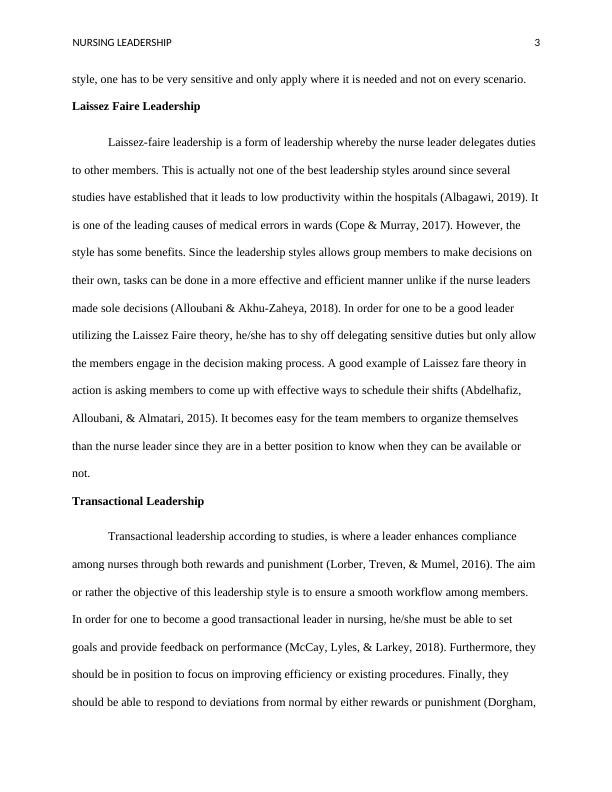Different Leadership Styles in Nursing
8 Pages1477 Words302 Views
Added on 2023-03-29
About This Document
This article discusses the different leadership styles in nursing, including autocratic, laissez-faire, transactional, and transformational leadership. It explores the advantages and disadvantages of each style and provides examples of when they may be effective. Understanding these leadership styles can help nurse leaders improve teamwork and communication in healthcare settings.
Different Leadership Styles in Nursing
Added on 2023-03-29
ShareRelated Documents
End of preview
Want to access all the pages? Upload your documents or become a member.
Leadership Styles in Healthcare Sector
|11
|3183
|323
Leadership Styles in the Case Study
|12
|1179
|79
Impact of Leadership on Motivation : Report
|18
|4185
|48
Leadership Styles in Nursing
|11
|3173
|45
Managing and leading teams
|25
|1342
|20
Leadership Philosophy: Overview, Styles, and Application
|11
|2841
|44



